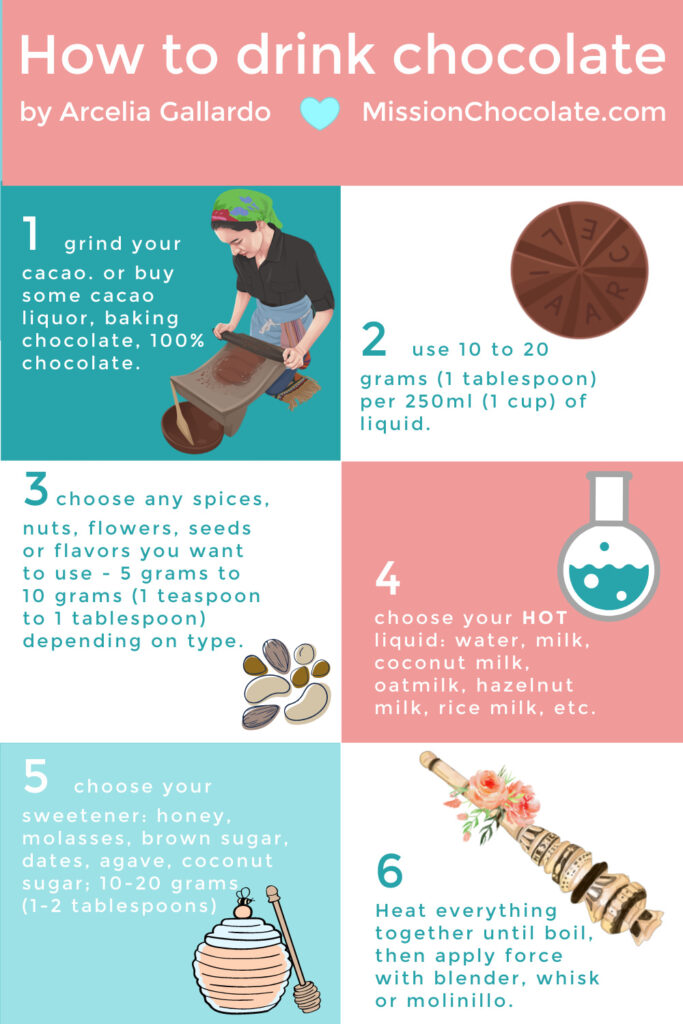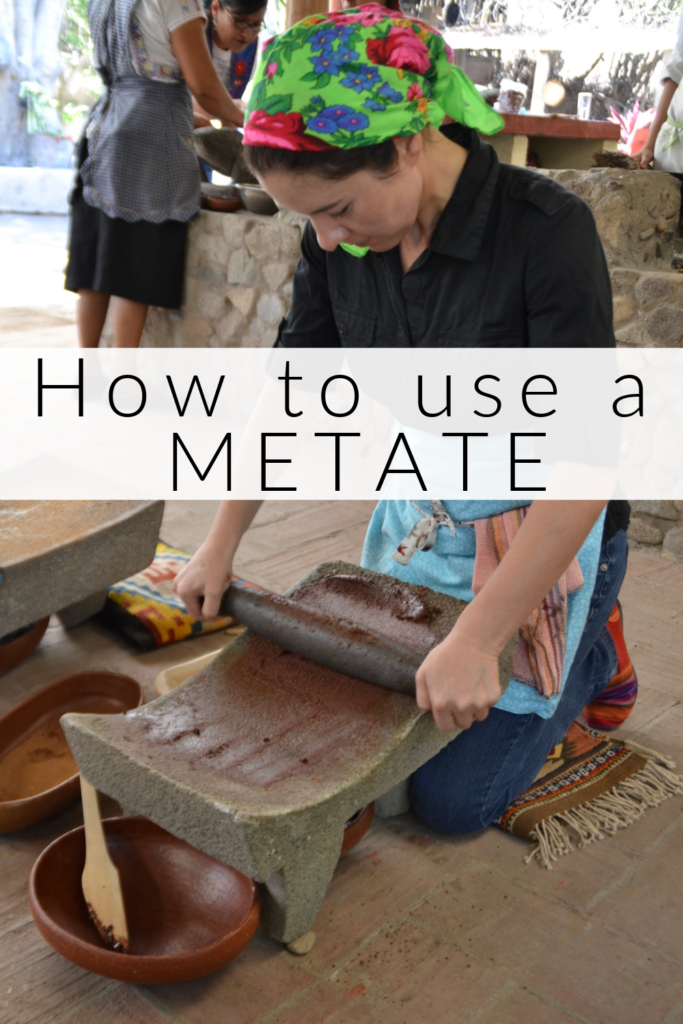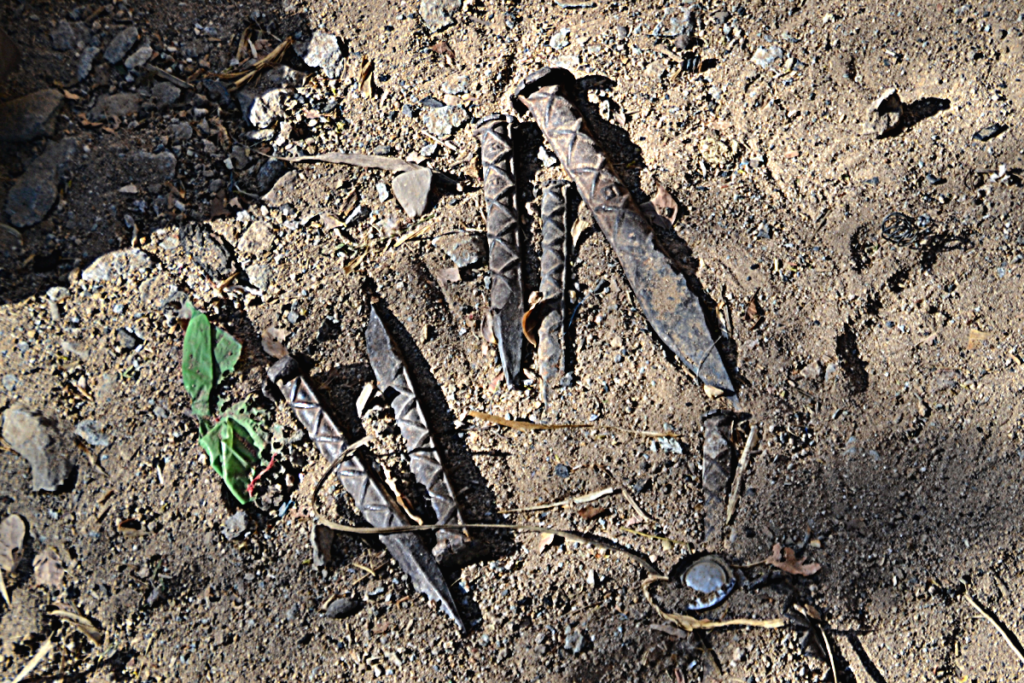How to use a metate
A metate is a slab of rock or volcanic stone that is hand carved and used throughout Latin America to grind cacao, corn, chiles, and many other ingredients, including insects to dye wools and cottons. Generally, it is very large and heavy enough to last the lifetime of the owner and is accompanied by a smaller rock that resembles a rolling pin that is called a mano in Spanish, or metlapil in Náhuatl. Every mano is specially made for its metate, a mano from another metate would have to be chiseled to fit.
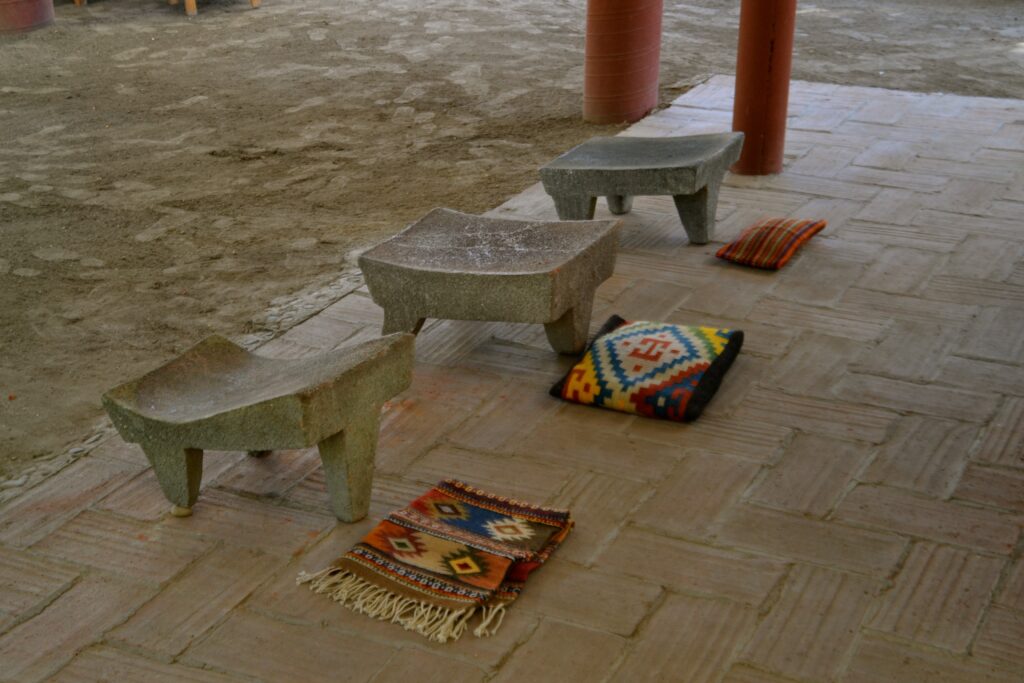
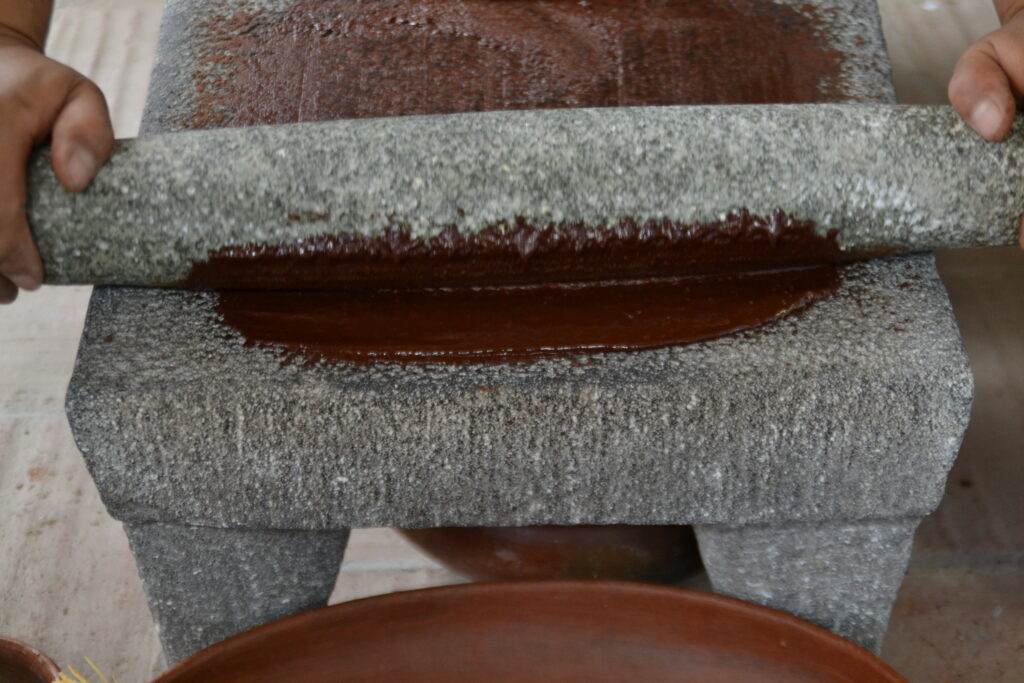
Metates are literally carved from the sides of hills and larger rocks – the best quality are made from volcanic rock and the worst are molded from cement. The metate maker will carve what can be recognized as a metate when he is sourcing it and try to leave as much unnecessary rock behind. These are very heavy and having to bring one from the mountain side is no easy feat. They use large animals to help carry one to five of these rough looking rocks back to their homes or workshops where it will take a few days of chiseling and shaping to get it ready. Below are a few metates that need to be chiseled, this is how they are brought from the origin. It has the general shape but needs a lot of work.
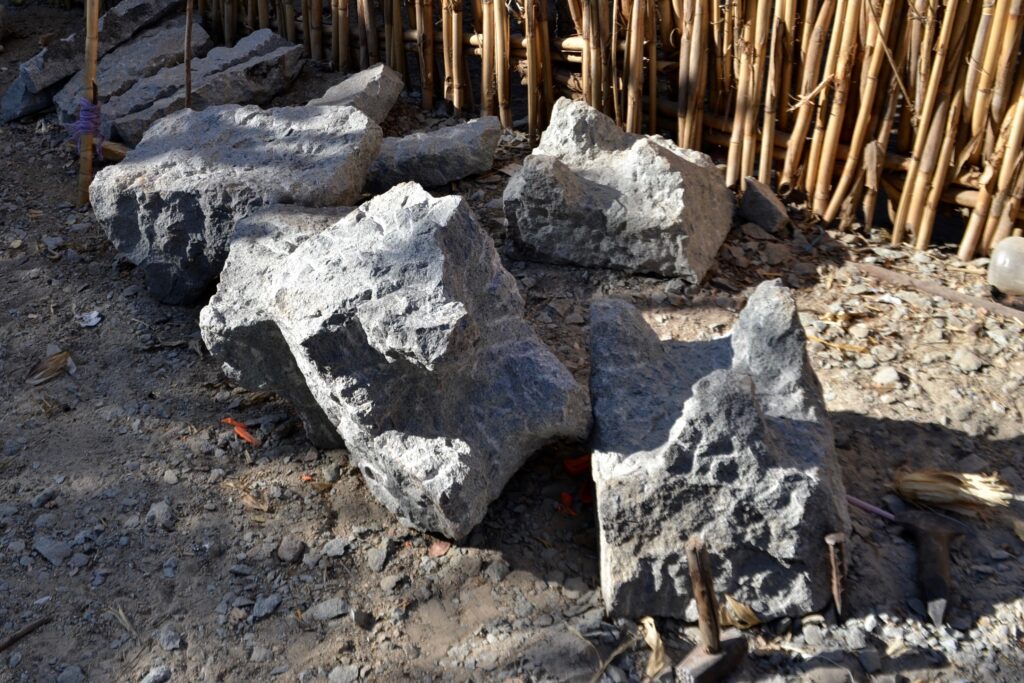
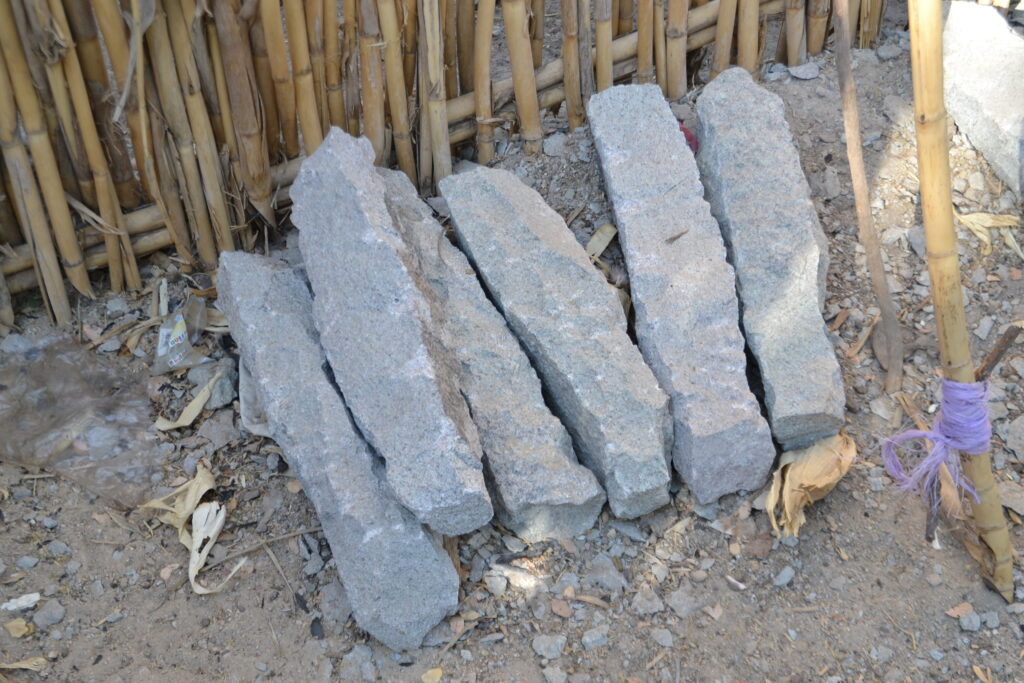
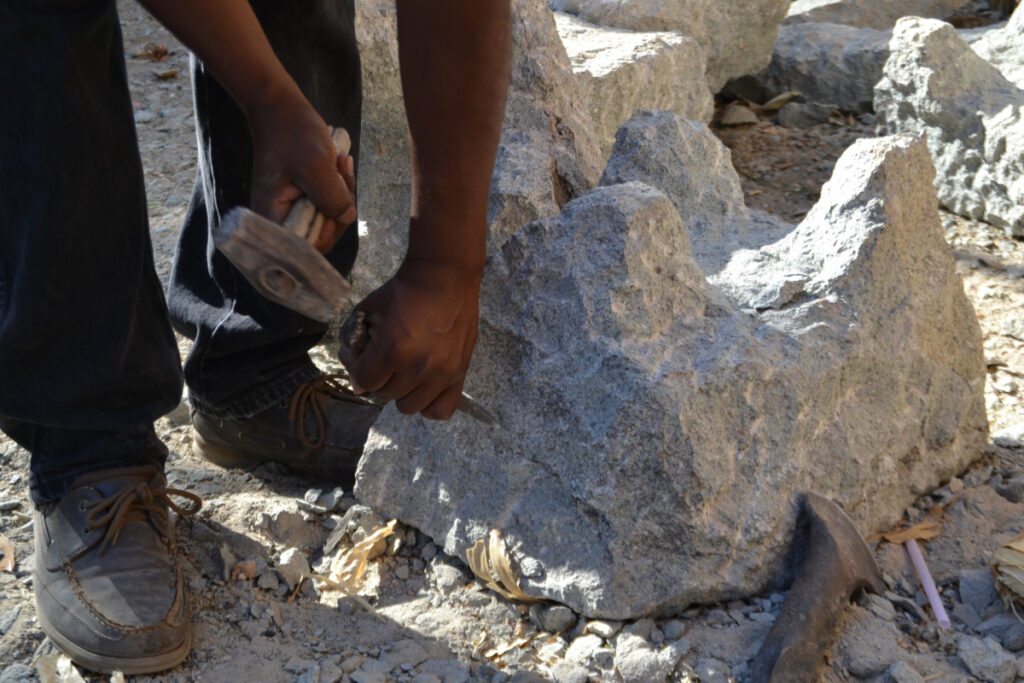
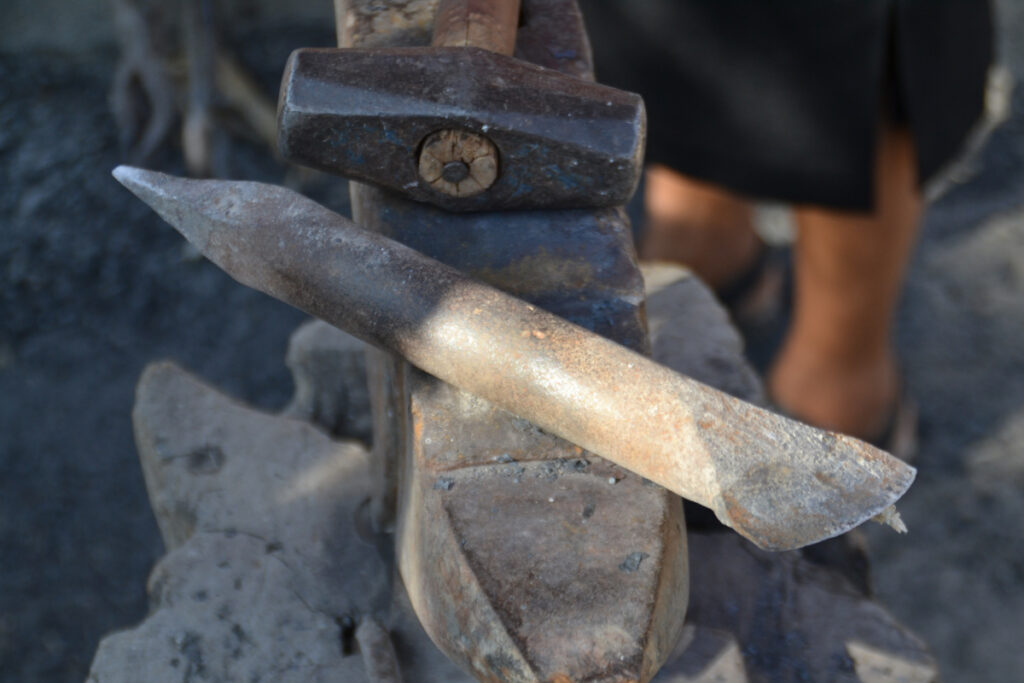
Before the Spanish arrived to the Americas, the metate was the quintessential kitchen tool. Although you can still find it in rural Latin America, the molino now replaces many of the metates in slightly modern homes. My grandmothers and aunts all own a metate but have not used them since the 1970’s when they were wealthy enough to buy a molino.
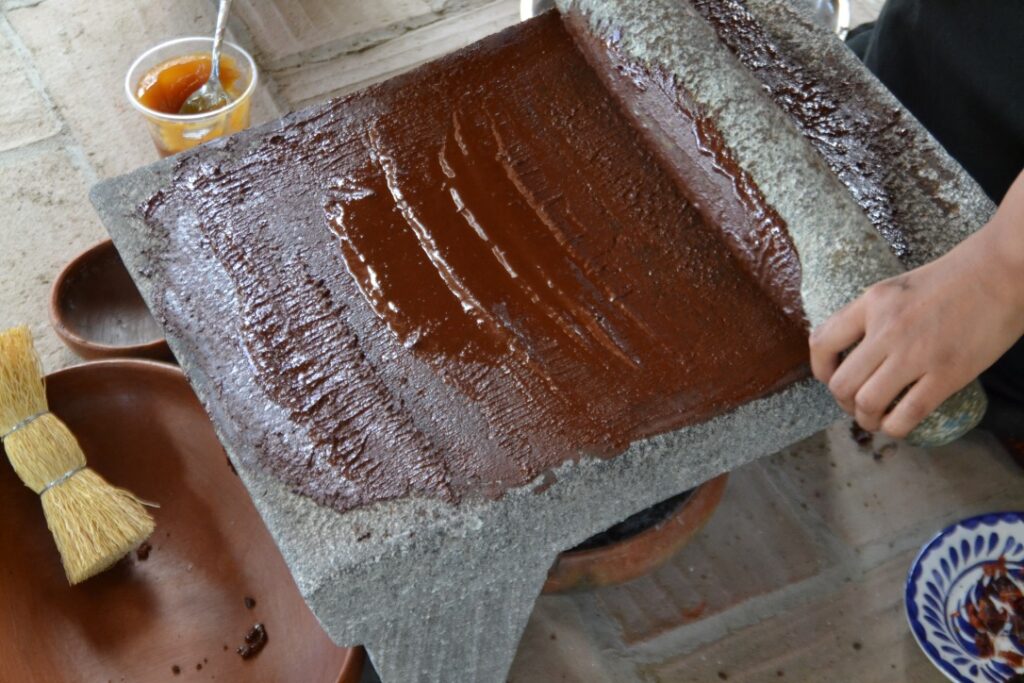
The word metate comes from metlatl, a word from the Aztec language, Náhuatl. This rock slab still remains a great tool for making the mix for cacao drinks or tortillas. Many women still use this to prepare daily meals.
If you are wealthier, you have a metate for every use – one for cacao, one for corn, one for chiles, one for rice (horchata), etc. But most women only have one, given to them on their wedding day to use for the rest of their lives. I was lucky enough to inherit my mother’s metate, given to her in 1957 and my grandmother’s metate, given to her in 1930. Back then it would have been impossible to prepare meals without one of these rocks.
If you are not going to hold your breath to receive a metate on your wedding day … you can buy one on amazon.com. If it is not available there, you can find ancient ones on Etsy.com. I have one that I bought in downtown Los Angeles, and this is how I learned that cement metates existed. Make sure that you confirm that the rock comes from one carved rock, that it is NOT made from cement, and that it comes from Mexico, this will give you the most assurance of quality. Cement is not recommended for grinding, the cement does ware quickly and will get in whatever you are grinding. In Mexico, you can buy a metate between $25 usd to $50 usd. In the USA you might pay $90 usd to $200 usd.
Some metates have three legs and others have none. When metates do not have legs they are called huilanches.
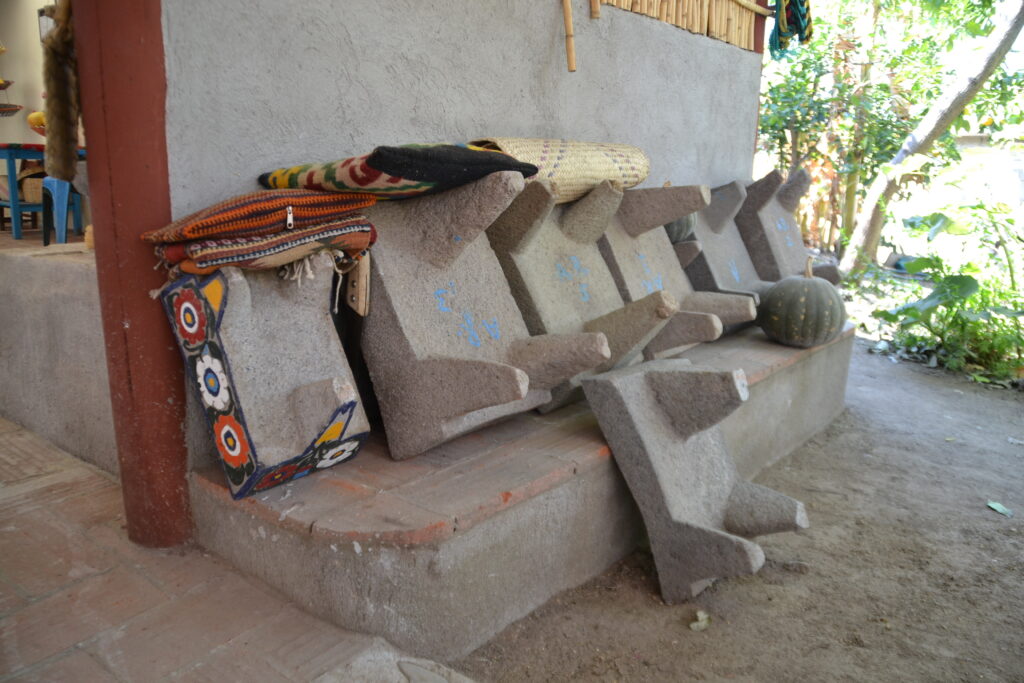
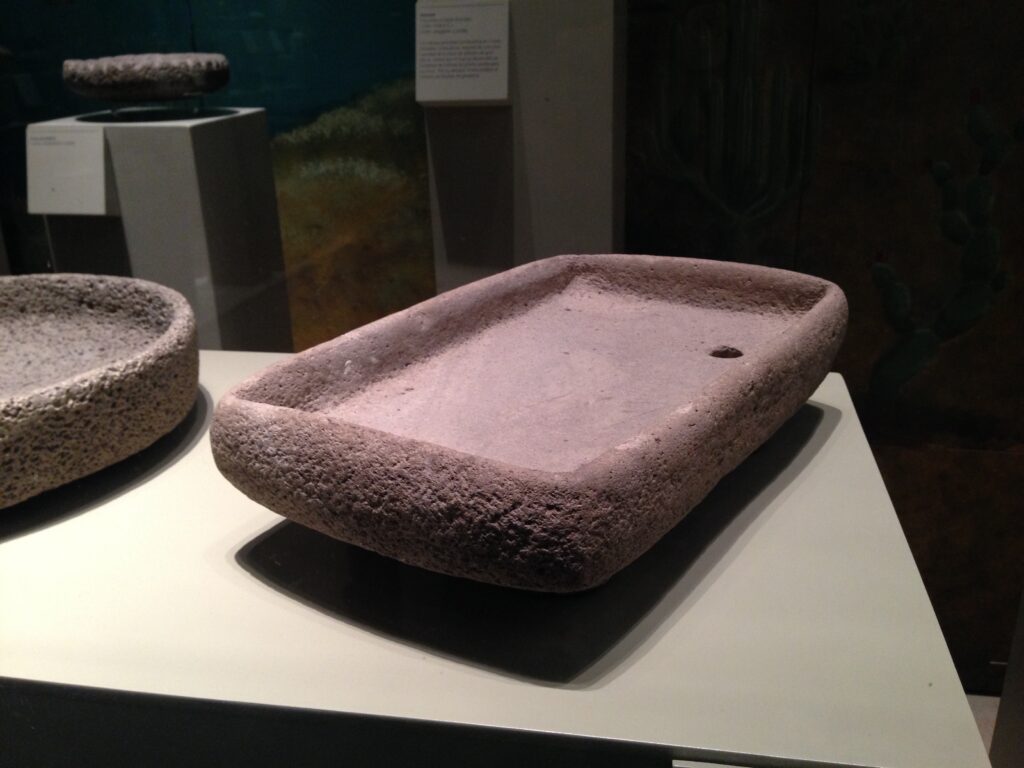
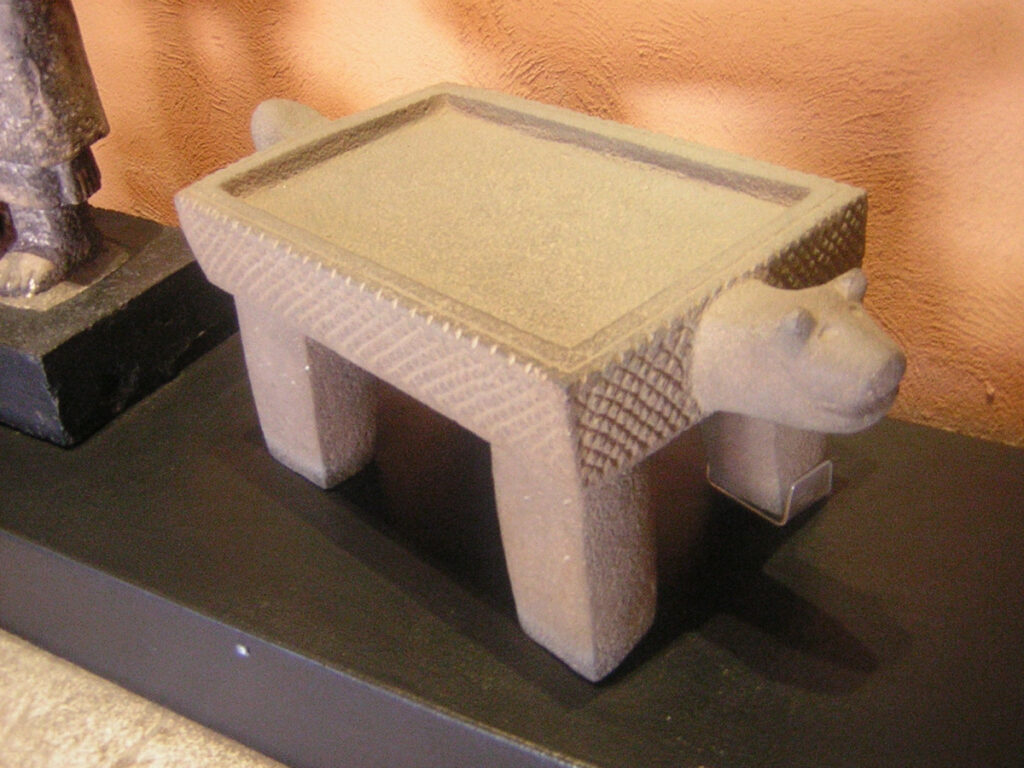
The metates that I have inherited have been worn down or “seasoned”, they are actually quite smooth to the touch like a river rock. If I wanted to use it to grind corn or cacao, I would have to carve some texture into it. I would do this with a metal pick and a hammer. Reversely, when you buy a new metate, you have to help smooth out the very rough parts by seasoning it before you begin to use it.
You can season a new metate in a few different ways. The goal is to get something hard and granular to rub on the surface of your metate to help remove excess stone or dust that might be loose and can get into your food. Coarse salt, uncooked rice or corn work perfect for this. You can place the salt, rice, or corn kernels on your metate and begin to grind it with the mano. You would repeat this process until the salt, rice, or corn no longer remove dust or rocks from the metate. The rice should still be the color of rice after grinding. You will see that the first grind will be dark, the second lighter and as you continue should keep the original color of the ingredient you are using. I would do about 5 grinds, each grind with new rice, corn or salt. When you are confident that you haver removed all of the dust and loose pieces, wash with neutral soap and water. A bristle brush is recommended for the cleaning of your metate, in Mexico it is a natural brush but you can use a plastic brush as well.
Once it dries, you can begin using your metate to make some chocolate drinks.
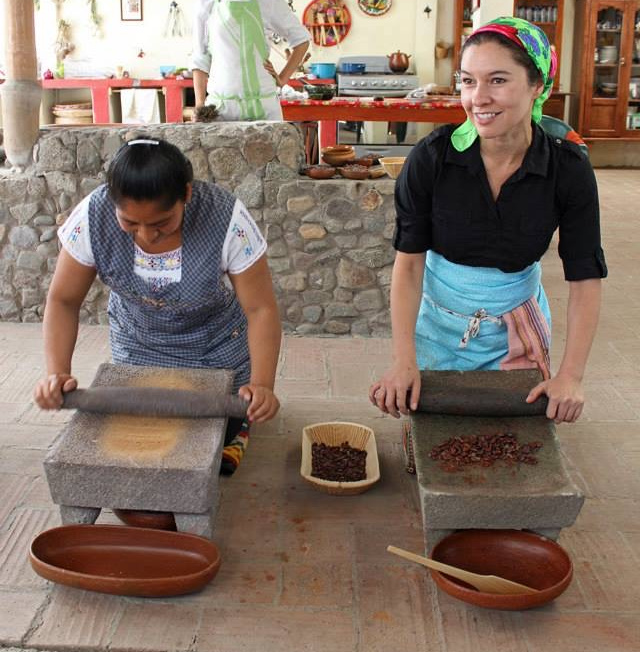
The process of grinding cacao on a metate is simple; after you have roasted, cracked, and separated the nibs from the husks, you place the cacao on the rock and begin to grind it. It helps if you are in a warm area otherwise you can place a candle or hot ash under the metate to help warm it. Or you can place the metate in a hot oven, 100c/15min, to warm it before you begin to grind. The warmer your metate the easier the cacao will grind. You can also warm the nibs before grinding. It takes 5-10 passes to create a very liquid cacao paste.
In terms of technique, it should not hurt. What position you decide to use for your grind, it should not hurt. If it does, you are doing it wrong.
- Place the metate somewhere flat, this can be the floor or a short table. Should not be a normal height table because you need your body weight to help force the grind. I prefer to place on the floor.
- Make sure the metate is not able to move around; if it easily moves, add something to cause friction like a rubber mat or carpet.
- Place a pillow or thick mat under your knees if using on the floor.
- Place your cacao nibs at the top of the metate.
- Hold the mano with both hands, wrap your hands as much as possible around the mano, except the part that is touching the metate.
- Your weight will be equally distributed between your thighs and your upper body, shifting more weight on your upper body when you go forward in your grind.
- Your upper body should be completely over the metate when grinding.
- Never moving your hands from the initial position you put them on the mano, you will move it back and forth. Each time you move back (towards you), you grab a bit more of the nibs and push them forward.
- Once you do this with all the nibs, use a spoon to place everything back at the top and do it again until you release the cocoa butter and achieve a liquid.
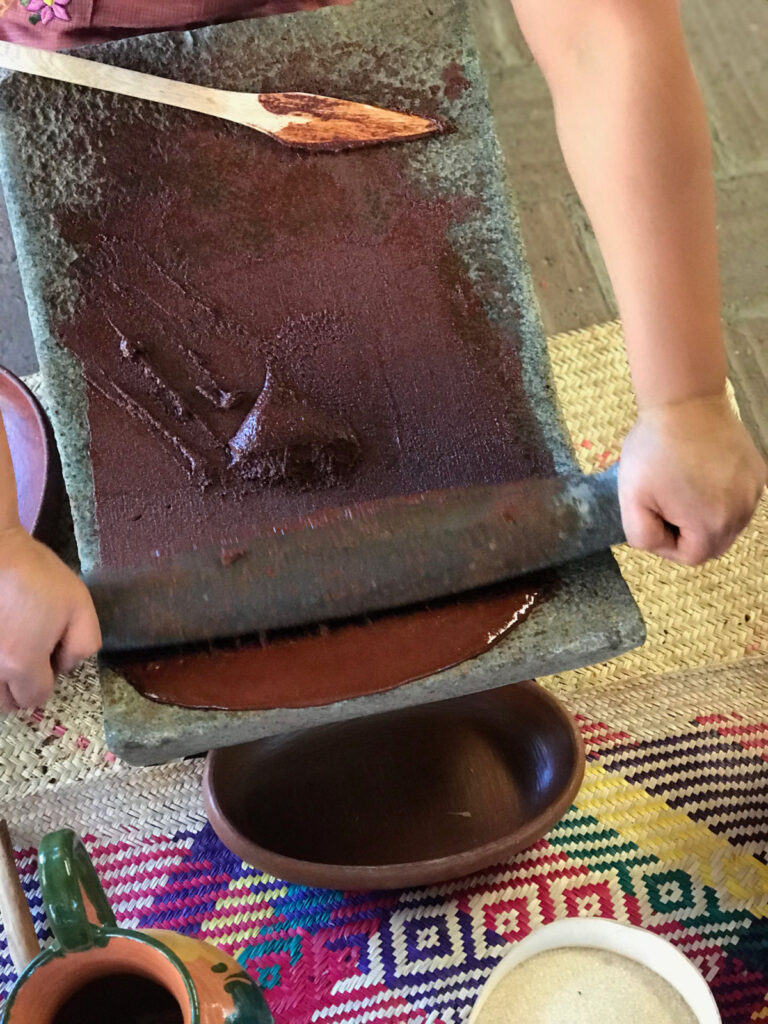
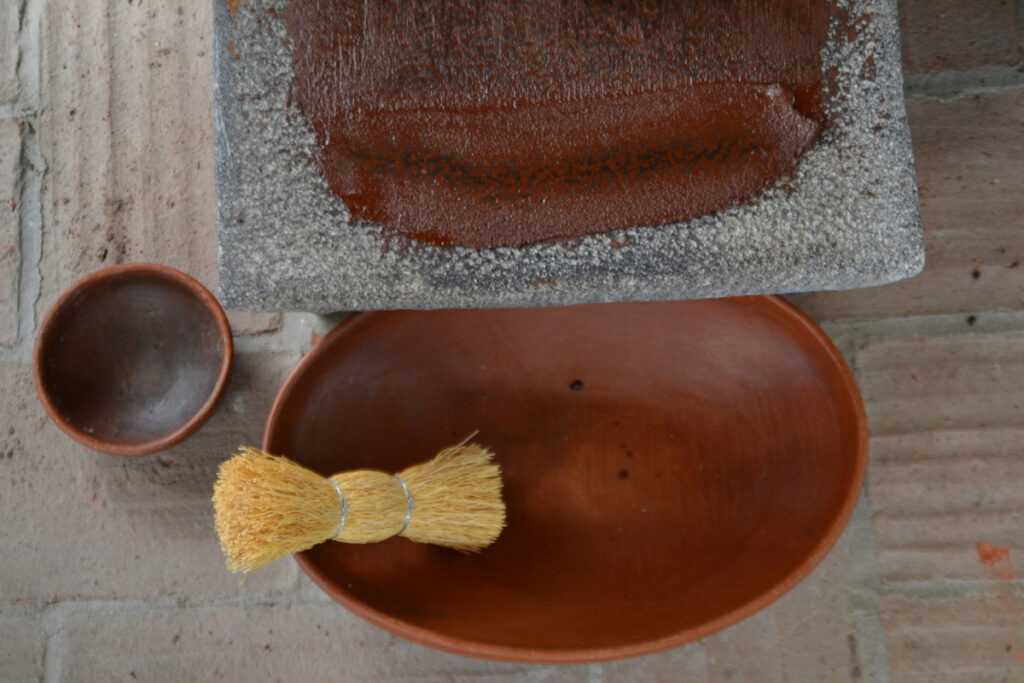
Metates need to cool naturally before they can be sprayed with water for cleaning. Otherwise the shock of cold will crack it. Never wet a hot metate! I always allow my metate to cool until the next day before I wash it. You can simply wash with warm water and your brush – you can use a fragrant free soap if you need to get rid of a strong aroma. Let dry naturally.
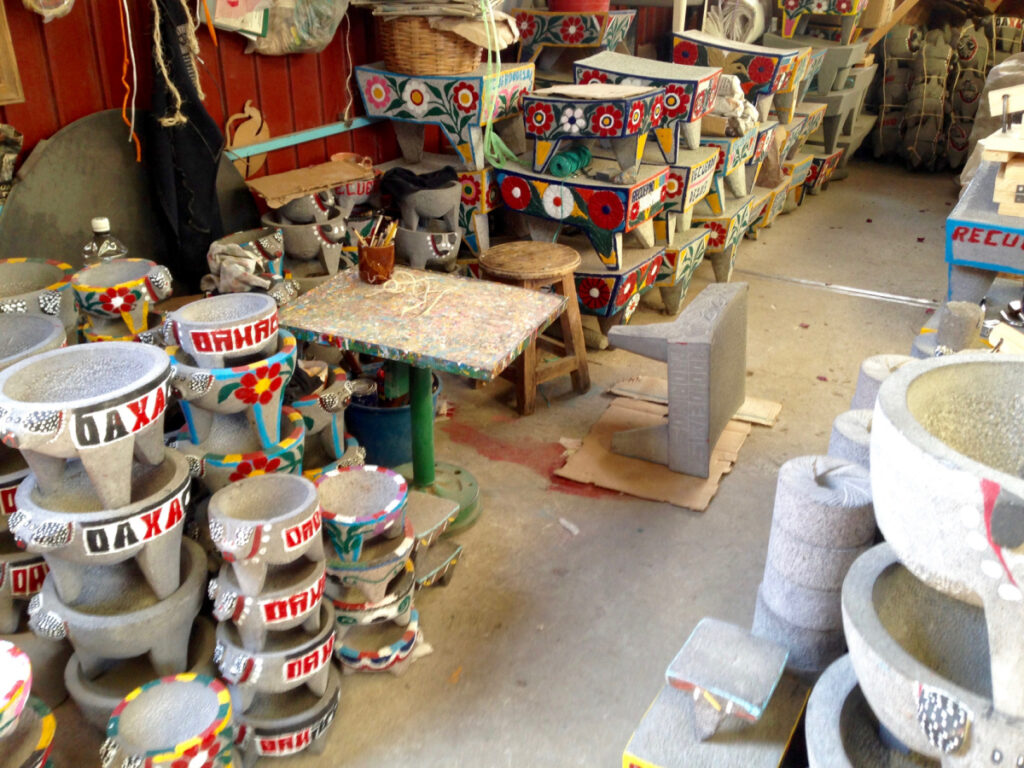
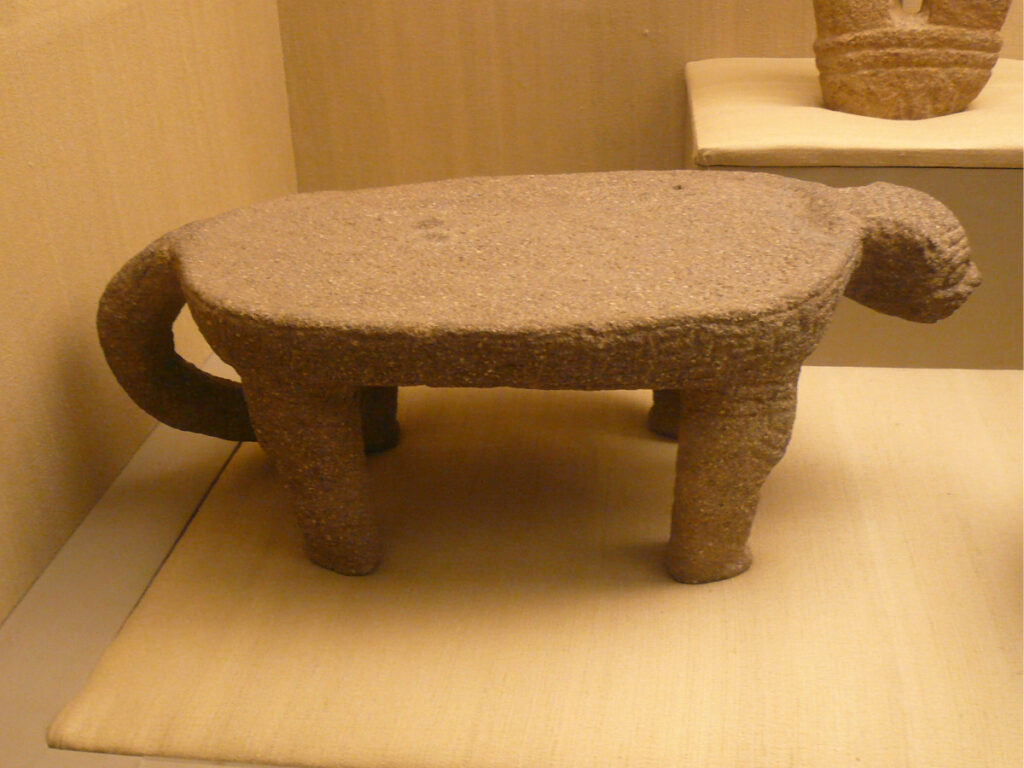
Owning a metate is not for everyone, but it is remarkable to be able to use your natural powers to make chocolate or masa or whatever you place on it. Once you have your metate, it will last your lifetime if properly taken care of. You can store it anywhere just make sure to give it a rinse before using it since it could be months in between and dust does settle on it.
Let me know where you got your metate or if you have any questions – arcelia@missionchocolate.com.
Below is a basic infographic on what do with your cacao once you grind it.
